This is part 1 of 5 in a series of posts of opportunities available to you and building a better world for yourself by surviving (or thriving) during a recession and a pandemic.
The life you used to have ain’t coming back
What you used to do and how you did it is gone. Life has changed significantly. And for the foreseeable future, it will not return to what we used to have. You need to accept this as soon as possible. The more you cling to the past, the harder change will be. I can’t tell you what your future holds, except that you will not have what you used to have (and it sure as shit will be more than four weeks away). What awaits us all now is a new future.
Accept this and you’ll be better able to see and make changes to fit better into the new future.
Our future will have a new normal – one that I hope learns from the mistakes made in recent years by EVERYONE (our supposed leaders, you, me … everyone).
Planning opportunity: letting go of the past
Plan for the worst, hope for the best
You need to be prepared for the worst should that happen. And when I say the worst, I’m talking about the worst for you (my worst will be different to yours).
So, think about how long you’re going to need to cover you and your business for. How much is your income likely to drop? What things can you do if that happens? How will you earn more money and/or save costs? And for how long? Thinking about the worst now will make things easier later.
Whatever you decide, you need to be aware this could take up to 12 months before the dust starts settling. So, you need to consider how you will cover food, shelter, clothing for you and your family, and keep your business afloat for up to 12 months.
That means planning for your minimum breakeven point – the lowest amount of income you need to make to cover costs. Don’t worry about how that money will come to you yet – just work out that minimum amount of cover you’re going to need.
And if the worst doesn’t happen, then you’ve got some extra cash, and you’ve made sure your business is still relevant today. No downside.
Planning opportunity: work out your exit plan in advance
Build your war chest. If you don’t have one, get one FAST.
Whether you’re on wages or in business you should be living within your means – i.e. not spending more than you make. Unfortunately, I know most people spend what they make (or more) and have little, if any, savings. That means surprises are difficult.
If you don’t have a war chest (I’m talking about cash savings) to help get you through this, then you need to build one ASAP! Every dollar you can save right now is a dollar available later. It might be the difference between buying some food or not.
Sell unnecessary stuff. Collect outstanding debts from your debtors. Incentivise debtors to pay if need be. DO NOT DISCOUNT! Incentives offer something for something – discounts give away money. Offer an incentive to your customers in return for quicker payment so they get 5% off and you get cash earlier.
Planning opportunity: build cash reserves now.
Cut or defer unnecessary costs – business and personal
On average people spend approximately 15% on things that aren’t important, i.e. you could save 15% of what you spend and not impact your happiness in life at all.
What could you do with an extra 15% in your bank? Don’t think about that now. Instead, think about what you spend your money on currently – look at your bank statements (not your memory) and question whether you need it or not now and make the decision TODAY to stop spending money on ‘stuff’ that doesn’t make YOUR world a better place.
Consider having a second level of costs you cut if things get worse – cut deeper! This is no time to pay for anything that’s not necessary. Just make sure you don’t cut anything from your business costs that are important to your customers.
And don’t cut everything (unless you have to?) so far that you’re living off rice soup. You have to have something to live for – a treat, some escapism, some joy, some happiness. So consider keeping at least one thing that adds to your life to balance out what’s likely to be tough times.
For costs you can’t cut, look at deferring them until later in the year when hopefully your business is open and earning income again. Whether you can defer any costs or not will come down to whether the cost can be deferred, how long can you defer that cost, and the likelihood of your business reopening enough to cover that cost when it needs to be paid.
Planning opportunity: lower your breakeven point (the amount of income you need to earn to cover all costs)
